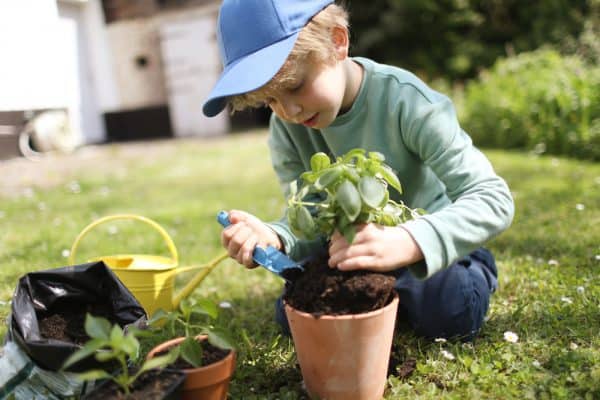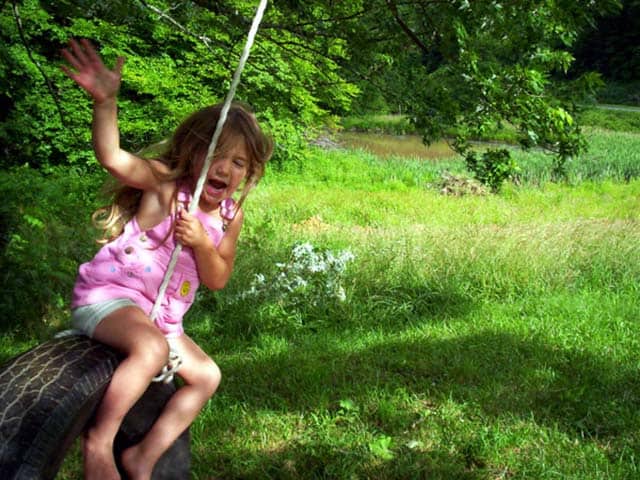Having a family garden can be a rewarding and enriching experience for everyone involved. Not only does it provide a great opportunity for spending quality time together, but it also teaches children valuable lessons about nature, responsibility, and where their food comes from.

If you’re interested in starting a family garden but don’t know where to begin, this article will guide you through the process from the very basics to maintaining a thriving garden.
Understanding the Basics of Gardening
Before diving into the world of gardening, it’s important to have a solid understanding of the basics. One crucial aspect is soil quality. Good soil provides the necessary nutrients, aeration, and drainage that plants require to thrive. Ensure that your garden has well-draining soil, free from rocks and debris. You may need to test the pH level of the soil and make adjustments by adding compost or fertilizer.
Another important factor is choosing the right plants for your garden. Consider the climate and conditions unique to your region when selecting plants. Opt for plants that are suitable for the amount of sunlight and water available in your area. Additionally, take into account the size and growth habits of the plants to ensure they have enough space to flourish.
When it comes to soil quality, it’s not just about the nutrients and drainage. The texture of the soil also plays a significant role in plant growth. Soil texture refers to the size of the mineral particles that make up the soil. Sandy soils have larger particles, allowing for good drainage but may not hold nutrients well. On the other hand, clay soils have smaller particles, which can hold nutrients but may become waterlogged. Loamy soil, a mixture of sand, silt, and clay, is considered ideal for gardening as it provides good drainage, retains moisture, and is rich in nutrients.
Aside from soil quality and plant selection, understanding the microclimate of your garden is essential for successful gardening. Microclimates are small areas within your garden that have different environmental conditions than the surrounding area. Factors such as sunlight exposure, wind patterns, and proximity to buildings or trees can create microclimates. By identifying these microclimates, you can choose the most suitable plants for each area of your garden, maximizing their growth potential.
Planning Your Family Garden
Once you have a grasp of the gardening basics, it’s time to start planning your family garden. Begin by selecting an ideal location for your garden. Look for an area that receives ample sunlight throughout the day. Most plants require at least six hours of direct sunlight to thrive. Choose a spot that is easily accessible and visible from your home, making it easy for everyone in the family to monitor and enjoy.
Designing the garden layout is the next step in the planning process. Consider the size of your garden and the types of plants you want to grow. Group plants with similar sunlight and water requirements together. Leave enough space between plants to allow for proper airflow and future growth. You can also add decorative elements such as pathways, raised beds, or trellises to enhance the aesthetic appeal of your garden.
Choosing the right tools is crucial for efficient gardening. Invest in a set of high-quality gardening tools that are suitable for your specific needs. Common tools include a trowel, hand pruners, a rake, a hoe, and a watering can or hose. Having the right tools will make gardening tasks easier and more enjoyable for the whole family.
Furthermore, when planning your family garden, it’s essential to consider the soil quality in your chosen location. Conduct a soil test to determine its pH level and nutrient content. Based on the results, you may need to amend the soil with organic matter or fertilizer to create a healthy growing environment for your plants. Good soil quality is the foundation of a successful garden, providing essential nutrients and promoting strong root development.
In addition to selecting the right plants for your family garden, think about incorporating elements that attract beneficial insects and pollinators. Planting flowers such as marigolds, lavender, or sunflowers can help attract bees and butterflies, which play a vital role in pollinating your crops. Creating a diverse ecosystem in your garden not only enhances its beauty but also promotes natural pest control and overall plant health.
Involving the Whole Family
Gardening is an excellent activity to involve the whole family in. Assigning gardening tasks based on age and capabilities is a great way to distribute responsibilities and make everyone feel involved. Younger children can help with planting seeds or watering plants, while older children can assist with weeding and harvesting. Make sure to explain the importance of each task and encourage questions and curiosity.
Making gardening fun for kids is essential to keep them engaged and interested. Allow them to choose their own plants or create their own mini-garden within the main garden. Incorporate games and competitions, such as who can grow the tallest sunflower or the largest tomato. This way, children will develop a sense of ownership and excitement for their garden.
There are numerous benefits to gardening as a family. It provides an opportunity to connect with nature and appreciate the process of growth and nurturing. Working together in the garden fosters teamwork, communication, and problem-solving skills. Additionally, growing your own fruits and vegetables promotes healthy eating habits and can save money on groceries.
Furthermore, involving the whole family in gardening can create lasting memories and strengthen bonds. Spending time outdoors together, tending to plants and watching them grow, can be a deeply rewarding experience. It offers a chance for family members to unplug from technology and connect with each other in a meaningful way.
Another aspect to consider is the educational value of gardening for children. It provides hands-on learning opportunities about plant life cycles, ecosystems, and the importance of environmental conservation. Children can witness firsthand the impact of their actions on the environment and learn to appreciate the interconnectedness of all living things.
Maintaining Your Family Garden
Regular watering and weeding are vital to keeping your family garden healthy and thriving. Monitor the moisture levels in the soil and water accordingly. It’s better to water deeply and less frequently than to water lightly and frequently. Pull out any weeds that may compete with your plants for nutrients and space. Regular weeding prevents the growth of invasive plants and ensures that your plants have plenty of room to grow.
Dealing with pests is an inevitable part of gardening. However, there are several environmentally friendly ways to manage pest problems. Encourage natural predators, such as ladybugs and birds, to visit your garden by providing them with food and shelter. You can also use organic pest control methods, such as companion planting or homemade insecticidal soaps.
Finally, it’s important to provide seasonal care and harvesting for your family garden. Different plants have varying requirements throughout different seasons. Adjust your gardening practices accordingly, such as protecting sensitive plants during cold winter months or providing shade for delicate plants during scorching summers. Harvest crops at their peak ripeness and enjoy the fruits of your labor with your family.
In conclusion, starting a family garden is not only a beneficial and educational endeavor but also a wonderful way to bond and connect with nature. By understanding the basics of gardening, planning your garden, involving the whole family, and maintaining it properly, you can create a beautiful and thriving family garden that brings joy and satisfaction to everyone involved. Happy gardening!



